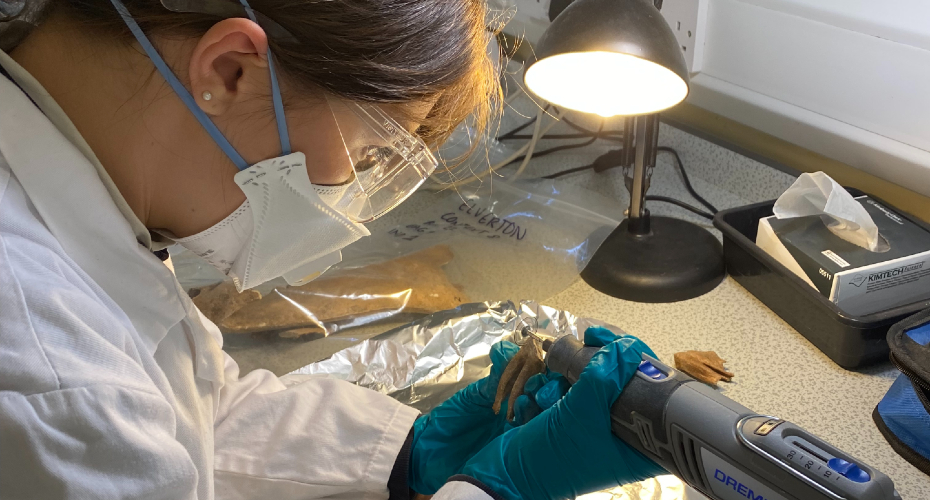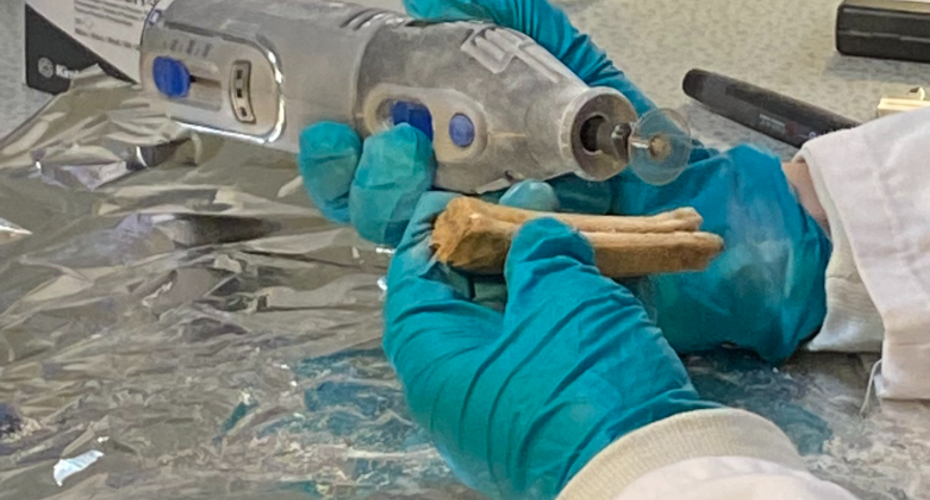Adapted from a news release from the University of Exeter (UK) written by Andrew Merrington
Archaeological analysis of a near-unique animal cemetery discovered in London nearly 30 years ago has revealed the international scale of horse trading by the elites of late medieval and Tudor England.

Using advanced archaeological science techniques, including studying chemical composition, researchers have been able to identify the likely origins of several physically elite horses and the routes they took to reach British shores during the formative years of their life.
These superior-quality animals were sourced from a variety of locations across Europe specifically for their height and strength and imported for use in jousting tournaments and as status symbols of 14th- to 16th-century life. They include three of the tallest horses known from late medieval England, standing up to 15.3 hands high, which, while quite small by modern standards, would have been very impressive for their day.
‘Chemical signatures’ the key
The skeletons of the horses were recovered from a site under the modern-day Elverton Street in the City of Westminster, which was excavated in advance of building works in the 1990s. In medieval times, the cemetery would have been located outside the walled City of London but was close to the royal palace complex at Westminster.
The research, led by Britain’s University of Exeter and funded by the Arts and Humanities Research Council, is published in the latest edition of Science Advances.
“The chemical signatures we measured in the horse’s teeth are highly distinctive and very different to anything we would expect to see in a horse that grew up in the UK,” said Dr Alexander Pryor, senior lecturer in Archaeology and lead researcher. “These results provide direct and unprecedented evidence for a variety of horse movement and trading practices in the Middle Ages. Representatives for the King and other medieval London elites were scouring horse trading markets across Europe seeking out the best quality horses they could find and bringing them to London. It’s quite possible that the horses were ridden in the jousting contests we know were held in Westminster, close to where the horses were buried.”
First experiment of its kind
In the first experiment of its kind to be conducted on medieval horse remains, the researchers took 22 molar teeth from 15 individual animals and drilled out portions of the enamel for isotope analysis. By measuring isotope ratios of the elements strontium, oxygen and carbon present within the teeth and comparing the results with known ranges in different geographies, the team was able to identify the potential origin of each horse—and accurately rule out others, including prime European horse-breeding centers such as Spain and southern Italy.

Pryor said that at least half of the horses had diverse international origins, possibly Scandinavia, the Alps and other northern and eastern European locations. The results, the researchers conclude, were consistent with the breeding patterns of royal stud farms, where horses would reside until their second or third year before they were either broken and trained or sent elsewhere to be sold.
Physical analysis of the teeth revealed wear suggestive of heavy use of a curb bit, often employed with elite animals, especially those groomed for war and tournaments after the 14th century. Bit wear on two of the mares also suggested they were used under saddle or in harness and for breeding. And analysis of the skeletons revealed many of them to be well above average size, with several instances of fused lower thoracic and lumbar vertebrae indicative of a life of riding and hard work.
Like ‘modern supercars’
“The finest medieval horses were like modern supercars—inordinately expensive and finely tuned vehicles that proclaimed their owner’s status,” added Professor Oliver Creighton, a medieval specialist at the University of Exeter and part of the research team. “And at Elverton Street, our research team seem to have found evidence for horses used in jousting—the sport of kings, in which riders showcased their fighting skills and horsemanship on elite mounts.
“The new findings provide a tangible archaeological signature of this trade, emphasizing its international scale. It is apparent that the medieval London elite were explicitly targeting the highest quality horses they could find at a European scale.”
The paper, Isotopic biographies reveal horse rearing and trading networks in medieval London, can be accessed via Science Advances.








